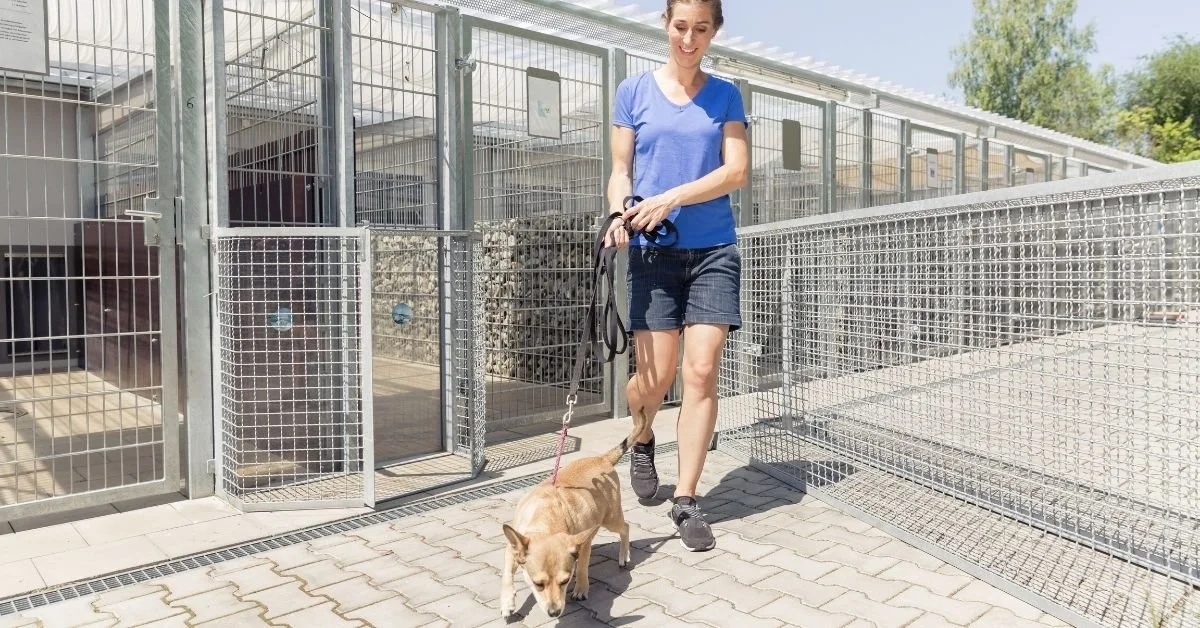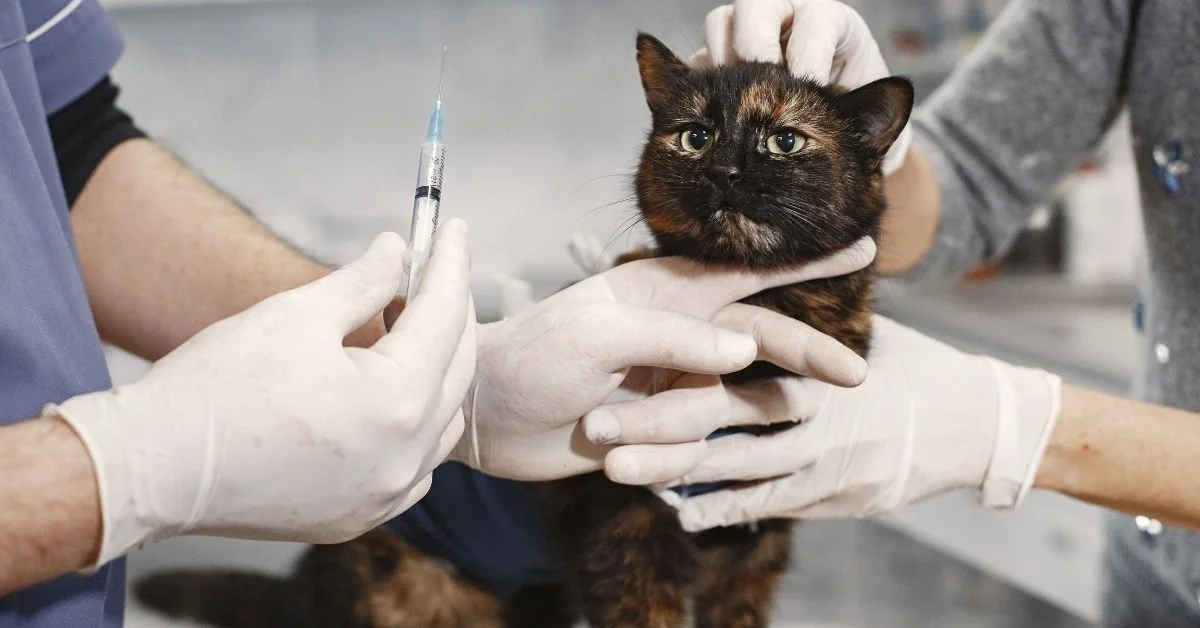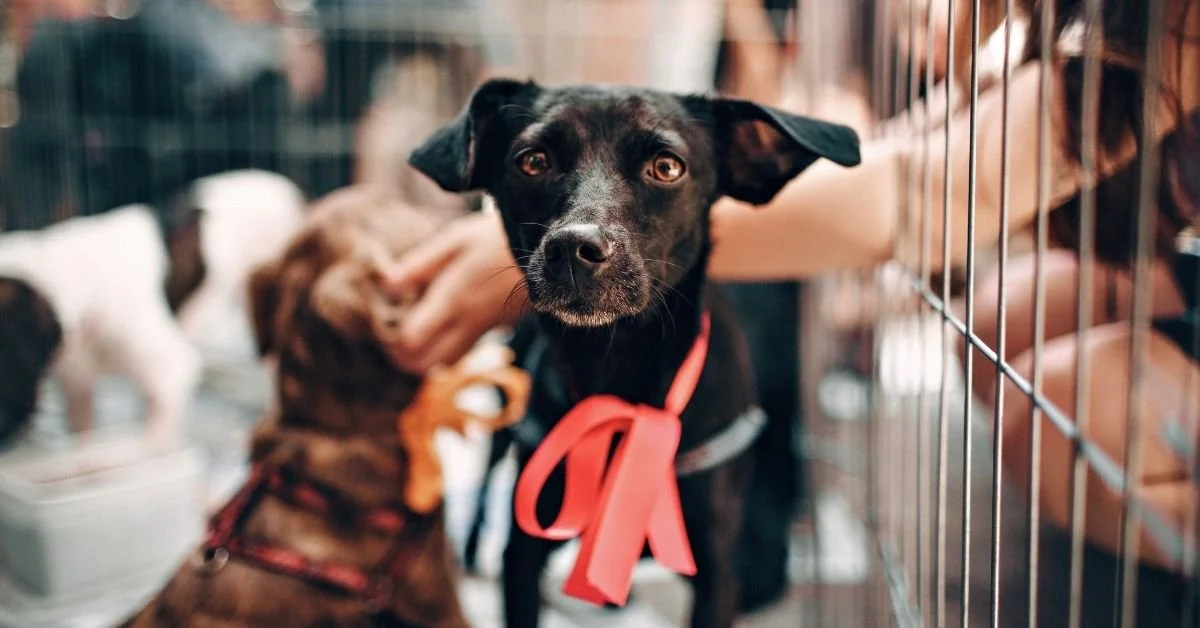The Reality of Shelter Overcrowding in the U.S. (And How You Can Help From Home)
Learn why U.S. shelters are overcrowded and discover simple, life-saving ways you can help right from home—no matter where you live.
Did you know that more than 6 million dogs and cats enter U.S. animal shelters every single year? Sadly, this number continues to rise, pushing shelters and rescues across the country to their breaking point. From bustling city shelters in places like Los Angeles and Miami to small, volunteer-run rescues in rural communities, the heartbreaking reality is universal: too many animals, not enough homes, and not enough resources to care for them all.
These overcrowded conditions don’t just affect the animals—they impact the people working tirelessly to save them. Rescue teams, shelter staff, and volunteers are emotionally and physically drained, doing everything they can to prevent healthy, adoptable pets from being euthanized simply because there’s no more room.
Every “Adopt Me” post you see online carries more weight than you might think. Behind each hopeful photo is a life waiting on borrowed time—waiting for someone, somewhere, to give them a second chance.
But here’s the hope: you don’t have to live near a shelter, foster a dog, or even adopt to make a real difference. Some of the most impactful actions you can take to help save lives start right where you are—right from home.
Whether it’s sharing an adoptable pet on social media, sending supplies from a rescue’s wishlist, or making a small donation, these simple, everyday actions help relieve the overwhelming pressure shelters face and bring us one step closer to solving the overcrowding crisis.
Why Are Shelters So Full?
The overcrowding crisis in animal shelters across the U.S. isn’t the result of one single issue—it’s a complex web of challenges that have compounded over time. Understanding the root causes is key to realizing how everyday actions can make a difference. Let’s break down the primary reasons why so many shelters are stretched beyond capacity.
1. The Aftermath of Pandemic Adoptions
During the COVID-19 pandemic, millions of people turned to pet adoption as a source of companionship during lockdowns. Shelters across the country saw record-high adoption rates, filling homes with new furry family members.
However, as society reopened and routines shifted, many of these well-intentioned adoptions took an unexpected turn. Families faced major life changes—from job losses and housing instability to returning to busy schedules that left little time for pet care. Some adopters also underestimated the long-term responsibility that comes with pet ownership.
As a result, shelters began seeing a heartbreaking wave of owner surrenders—including pets adopted just months or even weeks earlier. This surge overwhelmed an already strained system, forcing shelters to care for more animals than they could sustainably support.
2. Backyard Breeding and Puppy Mills
While shelters are overflowing, the puppy industry—particularly backyard breeders and puppy mills—continues to pump out litters of animals for profit. These operations often prioritize quantity over quality, with little regard for animal welfare or the long-term impact on shelter overpopulation.
Many consumers, unaware of the cruelty behind these industries, purchase puppies from unregulated breeders, online platforms, or pet stores. Meanwhile, thousands of perfectly adoptable dogs and cats wait in shelters, overlooked in favor of designer breeds or puppies with misleading "papers."
Without stricter breeding regulations, mandatory spay/neuter laws, and public education campaigns, this vicious cycle of overbreeding and abandonment will continue to flood shelters with animals who deserve better.
3. Housing Insecurity and Rising Living Costs
For many families, the decision to surrender a pet isn’t about desire—it’s about survival.
The U.S. housing crisis has made it increasingly difficult for renters to find pet-friendly, affordable housing. Many landlords impose breed restrictions, size limits, or pet fees that put animal guardians in impossible positions.
Add to that the skyrocketing cost of living—veterinary care, food, grooming, and emergency medical expenses—and you have pet owners who feel financially trapped with no safe alternatives. Many surrender their pets not because they want to, but because they feel they have no choice.
4. Lack of Community Resources for Pet Owners
One of the most overlooked contributors to shelter overcrowding is the lack of preventative support for struggling pet owners. In many communities, resources like:
Low-cost or free spay/neuter clinics
Pet food banks
Affordable veterinary services
Behavioral training and support
are limited or non-existent.
Without access to these lifesaving resources, pet guardians may feel forced to surrender animals for reasons that could have been easily prevented—whether it’s a medical issue they can’t afford, a behavior problem they don’t know how to address, or simply not being able to feed their pet for the week.
Bringing It All Together
Understanding why shelters are so full is the first step toward meaningful change. Whether it’s advocating for better laws, supporting pet retention programs, or simply sharing information, we all have a role to play in creating a future where fewer animals are left behind.
What This Means for the Animals
While the statistics paint a grim picture, the real cost of shelter overcrowding is measured in the lives of the animals themselves. From increased euthanasia rates to emotional trauma, overcrowded shelters can quickly become dangerous and heartbreaking places for pets who deserve so much more.
1. Shortened Hold Times and Increased Euthanasia
When space runs out, time runs out.
In overcrowded shelters, staff are forced to make impossible decisions every day. To create space for incoming animals, many public shelters resort to shortening the hold times—the limited number of days an animal has to be claimed, adopted, or rescued before they risk being euthanized.
This means that even healthy, adoptable dogs and cats may be euthanized simply because there isn’t enough space. Senior pets, large breed dogs, black dogs and cats, and animals with minor medical needs are often the first to be overlooked or "red-listed."
It’s not that shelter staff don’t care—they do. But when there are more animals coming in than going out, they have few other options. This is the tragic reality facing thousands of pets every single day across the country.
2. Emotional and Behavioral Decline
Shelter environments, no matter how well-intentioned, are extremely stressful for most animals. Loud noises, unfamiliar smells, limited interaction, and the constant turnover of people and animals can cause pets to experience fear, anxiety, and depression.
Some animals shut down completely, sitting frozen in the back of their kennels. Others develop stress-related behaviors like pacing, barking, or lunging—behaviors that can make them appear "unadoptable" to visitors, even though these actions are simply a response to the overwhelming environment, not a true reflection of their personality.
This emotional decline creates a heartbreaking cycle:
Stress makes it harder to adopt.
Longer stays worsen their behavior.
Worsened behavior increases their risk of euthanasia.
Without immediate intervention—whether through adoption, fostering, or transfer to a rescue—many animals spiral deeper into this emotional shutdown, making their recovery even harder once they do find a home.
3. Burnout Among Rescuers and Volunteers
While the animals suffer in silence, the people on the frontlines are battling their own emotional and financial exhaustion. Rescue organizations, especially small, foster-based nonprofits, are working tirelessly to save as many lives as possible, but their resources are limited.
Most rescues rely entirely on donations, yet they face mounting expenses such as:
Emergency vet care
Spay/neuter surgeries
Medications and vaccinations
Transport and boarding fees
Food, supplies, and equipment
On top of that, volunteers often juggle full-time jobs, families, and personal responsibilities, leading to compassion fatigue and burnout. The mental and emotional weight of seeing so many animals in need—and not being able to save them all—is a burden no one should carry alone.
What You Can Do—Right From Home
While shelter overcrowding may feel overwhelming, you have more power than you think—and you don’t even need to leave your house to make a real difference. Whether you have five minutes, five dollars, or five hours, your actions matter. Here are five easy ways you can help save lives right from home.
1. Share Adoptable Pets Online
In today’s digital world, social media is one of the most powerful, life-saving tools available to rescues and shelters. Every time you share a post featuring an adoptable pet, you’re increasing that animal’s visibility, helping them reach potential adopters beyond the shelter’s local community.
I’ve witnessed this firsthand through my work supporting Ace of Hearts Rescue. More than once, a single share on Facebook or Instagram has led to a life-changing adoption for a dog who had been overlooked for months.
Pro Tip: Follow and share posts from your local shelters or trusted rescues like @aceofheartsrescueinc on Instagram. You never know who in your network might fall in love and adopt.
2. Shop a Rescue’s Amazon or Chewy Wishlist
Rescues don’t just need adopters—they need supplies to keep their animals fed, healthy, and safe. You can make an immediate impact by shopping their Amazon or Chewy wishlists, sending items like:
Dog food
Treats
Toys
Leashes and harnesses
Cleaning supplies
Medical necessities
Here’s how you can help Ace of Hearts Rescue today:
You might be asked to log in to view the list, but it’s worth it! Every package you send is one less thing the rescue needs to worry about.
3. Consider Fostering or Volunteering
Fostering saves lives.
When you open your home to a foster animal, you create space for another dog or cat to be rescued. Even short-term fosters—just a few days or weeks—can make a huge difference.
Can’t foster? You can still volunteer virtually! Many rescues need help with:
Social media management
Fundraising campaigns
Graphic design
Administrative tasks
Grant writing
Get started by reaching out to local rescues or browsing The Green Muse Rescue Directory for organizations that need your skills.
4. Sponsor or Donate if You Can
Every dollar counts. Small monthly donations—even $5 to $10—can help cover the cost of vet bills, food, transportation, and other critical expenses that rescues face daily.
Consider setting up a recurring donation to trusted organizations like:
Or browse The Green Muse Rescue Directory to find a local group to support.
Tip: Many rescues offer sponsorship programs where you can help cover the costs for a specific dog or cat until they’re adopted.
5. Speak Up for Shelter Reform
You have a voice—and it matters.
Advocate for systemic change by contacting your local representatives and asking for:
Increased funding for shelters
Stricter regulations on breeding and pet sales
Expanded community support programs like free or low-cost vet care and spay/neuter services
Public pressure can lead to policy changes that make a long-term difference for animals in your community.
Together, We Can Save Lives
Whether you adopt, foster, donate, share, or speak up, your actions matter more than you know. Change doesn’t happen overnight, but every small effort adds up to create a better future for homeless pets across the country.
Every Share, Every Act Matters
Shelter overcrowding isn’t an unsolvable problem—it’s a challenge we can all help improve. Every action you take, no matter how small, creates a ripple effect that saves lives.
Support your local rescue.
Share adoptable pets.
Send a wishlist item.
Speak up for animal welfare policies.
You never know which act of kindness will change everything for an animal in need.
Continue Learning: Must-Read Guides on Adoption and Fostering
Want to go even deeper? Check out these related articles on The Green Muse to become a more informed, empowered pet advocate:
The Pros of Fostering a Rescue Animal: A Guide to Giving Back with The Green Muse
Discover the emotional rewards and life-saving impact of fostering a pet in need.Ensure a Successful Adoption: Guide to Responsible Pet Ownership & NAWSSA Support
Learn what it takes to prepare for adoption and become a lifelong advocate for shelter reform.10 Must-Have Eco-Friendly Pet Essentials for a Sustainable Pet Parent!
Upgrade your pet care routine with sustainable products that are better for your pet and the planet.The Ultimate Guide to Eco-Friendly Pet Supplies
Explore eco-friendly toys, grooming tools, and supplies that reduce waste without compromising care.How to Make Your Pet’s Lifestyle More Eco-Friendly
Simple, actionable tips to help lower your pet’s carbon pawprint.The Environmental Impact of Pet Waste & How to Manage It Sustainably
Learn how to dispose of pet waste responsibly and reduce your environmental impact.
Browse more resources on our Rescue and Advocacy Archive for tips, guides, and inspiring rescue stories.
Want to do more? Download our FREE Shelter Support Checklist with 10 easy ways to help animals in need—plus social post templates and wishlist links you can share today!
-
At The Green Muse, we proudly use our platform to help promote animal rescues and their adoptable pets. While we collaborate directly with rescue teams to raise awareness, we do so on a volunteer basis and are not financially compensated or officially representing any organization. Our mission is to help more animals find loving homes through education and community support.
-
Links to external websites, including rescue wishlists or nonprofit pages, are provided for informational purposes only. The Green Muse does not control the content, availability, or policies of these third-party sites. We encourage you to explore and support them at your own discretion.
-
The content in this article is intended for educational and awareness purposes only. It is not a substitute for professional advice, veterinary consultation, or direct communication with rescue organizations. Always seek professional guidance when considering adoption, fostering, or providing specialized care for rescue animals.









What does your yoga gear say about your practice? Gayo’s sustainable mats and wellness essentials invite you to align movement, intention, and care for the planet in every breath.